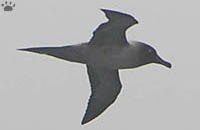
Light-mantled albatross (Phoebetria palpebrata),
off South Georgia.
Part 4. Other Seabirds
In addition to penguins, at least seventy other species of seabirds
can be seen in Scotia Sea at least occasionally; about half of them breed here.
The most numerous are small bluish-grey petrels called prions (Pachyptila).
South of the Antarctic Convergence, you can usually see hundreds of them flying
around at any given time. I don't have any pictures of them, because their fast,
irregular flight makes them almost impossible to photograph unless you get to
their breeding grounds. Most seabird colonies in the area are off-limits to visitors
coming by cruise ships: landings usually occur on protected beaches, while smaller
seabirds nest in burrows on grassy slopes, and albatrosses need steep hills where
strong winds allow them to take off easily.
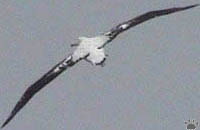 |
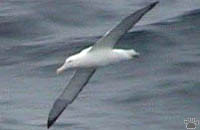 |
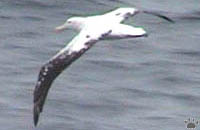 |
| Wandering albatross (Diomedea
exulans) has the largest wingspan of all living birds: up to 3.6 m/12'. About
4,000 pairs breed on South Georgia. Burdwood Bank, Scotia Sea. |
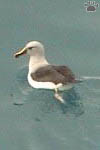
Grey-headed albatross
near breeding grounds,
Elsehul, South Georgia. |
The most common albatross in the area is black-browed
(D. melanophris), with almost half a million pairs on the Falklands and
60,000 pairs on South Georgia. Grey-headed albatross (D. chrysostoma) is
less numerous, with less than 40,000 pairs on South Georgia and 20,000 on Diego
Ramirez islands south of Cape Horn. Each species has its own migration patterns.
Wandering albatrosses are believed to fly around the Antarctic after each breeding
season, making up to 50 flights around the globe in their lifetime. Albatrosses
feed on whatever they can snatch from surface, although black-browed albatross
prefers krill and fish, while others feed mostly on squid. All albatrosses are
now under threat: many birds are accidentally killed by fishing operations. |
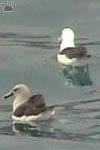
Grey-headed and black-
browed albatrosses,
Elsehul, South Georgia. |
 |
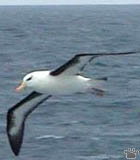 |
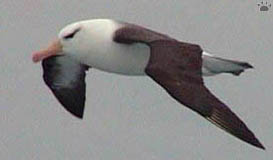 |
| Black-browed albatrosses. Off Isla
de los Estados, Scotia Sea. |

Light-mantled albatross building a nest.
Hills above Grytviken, South Georgia. |
Probably the most beautiful seabird of the Southern
Ocean is the light-mantled albatross. These long-tailed, narrow-winged birds nest
on steep, often rocky, slopes. Their breeding season starts later than in most
other seabirds, sometimes in late summer. Less than 8,000 pairs breed on South
Georgia. |
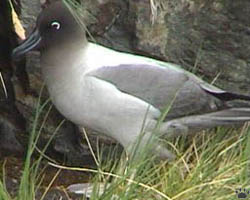
Light-mantled albatross building a nest.
Hills above Grytviken, South Georgia. |
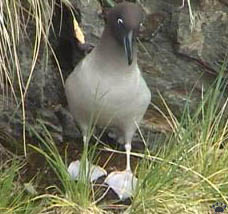 |
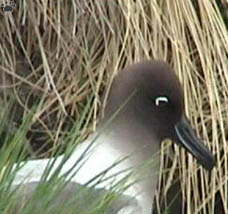 |
 |
| Light-mantled albatross at nest.
Hills above Grytviken, South Georgia. |
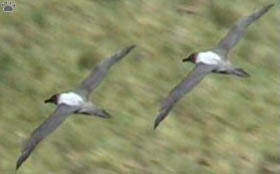
Courtship flight of light-mantled albatrosses.
Hills above Grytviken, South Georgia. |
Courtship of light-mantled albatrosses is a stunning
display of synchronized flying along rocky cliffs. Unlike wandering and grey-headed
albatrosses, they breed every year. |
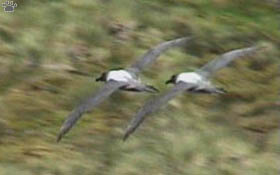
Courtship flight of light-mantled albatrosses.
Hills above Grytviken, South Georgia. |
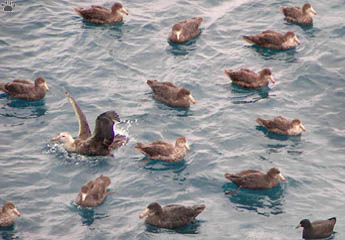
Southern giant petrels (Macronectes giganteus), Northern
giant petrels (M. halli),
and one white-chinned petrel (Procellaria aequinoctialis), Elsehul, South
Georgia. |
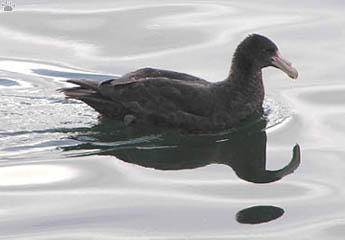
Southern giant petrel. These birds have more universal airframe
than albatrosses: they
are not as good at gliding, but are less dependent on wind. Ushuaia, Tierra del
Fuego. . |

Dark phase of Southern giant petrel,
Elsehul, South Georgia. |
Giant petrels are the vultures of the Southern
Ocean. They feed on carrion; males also kill small birds, while female are better
at catching squid and fish. Both species have variable coloration. Northern giant
petrel, with pink bill tip, is less common, with just 3,000 pairs on South Georgia.
Southern giant petrel is more numerous and widespread; some birds in the far South
are almost pure white. Both species are highly migratory, and sometimes form mixed
colonies, but Northern giant petrel starts breeding much earlier (late September
rather than November). |

White phase of Southern giant petrel,
off South Orkney Islands. |
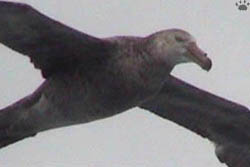
Southern giant petrel, Drake Passage. |
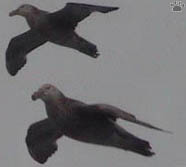
Both species of giant petrels, Drake Passage. |

Northern giant petrel, Gold Harbour, South Georgia. |

Southern fulmar (Fulmarus
glacialoides), off South Orkney Is. |
Numerous other species of petrels, fulmars, shearwaters,
prions, diving-petrels and storm-petrels inhabit the islands of the Scotia Sea.
The most abundant is Antarctic prion (P. desolata), with 20-30 million
pairs on South Georgia alone. All these birds lay only one egg; smaller species
usually nest in burrows. On the Falklands, Tierra del Fuego and South Georgia,
many are now extinct or rare on main islands because of predation by introduced
rats and other mammals, but still breed in huge numbers on offshore islets. |

Southern fulmar (Fulmarus
glacialoides), off South Orkney Is. |
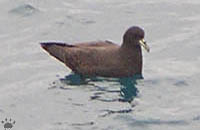 |
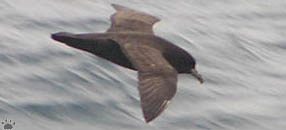 |
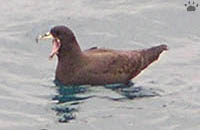 |
| White-chinned petrels, Elsehul,
South Georgia. |
 |
 |
 |
My personal favorite is snow petrel. It breeds in
high mountains, often far inland, and feeds around icebergs or ice floes. |
 |
 |
 |
Cape petrel
(Daption capense),
off Elephant Island,
South Shetland Is. |
Snow petrels (Pagodroma nivea),
off
Antarctic Peninsula. I hope to get better
views and better pictures of them during
my future trips to the Antarctic. |
At 34-45 g, Wilson's storm petrels
(Oceanites oceanicus) are the
smallest seabirds in the Southern Ocean. But they calmly feed even
during the fiercest storms, and migrate all over the world's oceans.
They have good sense of smell, and feed on krill, tiny fish and squid. |
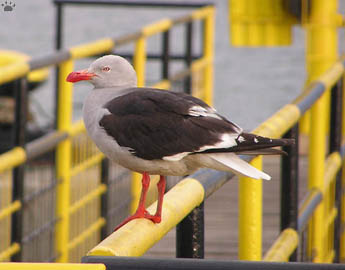
Dolphin gull (Larus scoresbii), Ushuaia, Tierra del Fuego. |
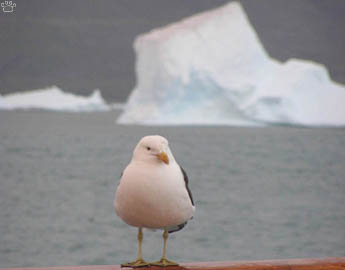
Kelp gull (L. dominicanus), Grytviken,
South Georgia. |
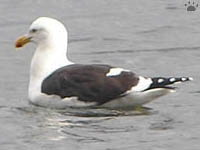
Kelp gull, Hope Bay, Antarctric Peninsula. |
Gulls are not very common in the Southern Ocean.
Only kelp gull makes it all the way to the Antarctic Peninsula (and even winters
there). Two smaller species occur on Tierra del Fuego and the Falklands. They
eat all they can find or catch, although kelp gull is partial to limpets. Kelp
gull population and range are growing; vagrant birds now show up in North America
every few years |

Kelp gull with chicks, Elsehul, South Georgia. |
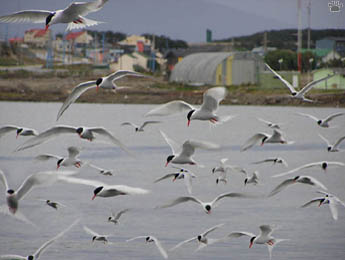
South American terns (Sterna hirundinacea), Ushuaia, Tierra
del Fuego. |
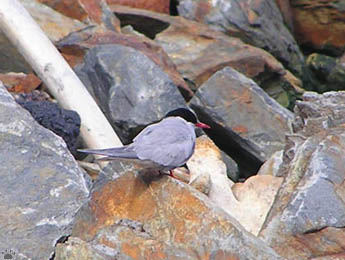
Antarctic tern (S. vittata), Grytviken, South Georgia. |
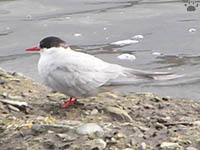
Immature Antarctic tern, Grytviken. |
Unlike gulls, terns feed almost exclusively on
fish and krill. South American tern breeds on Tierra del Fuego and the Falklands;
Antarctic tern - on islands further south. They fiercely protect their nest, attacking
trespassing people. Very similar Arctic tern comes from the Northern hemisphere
during Austral summer. It has the longest migration route of any bird. |
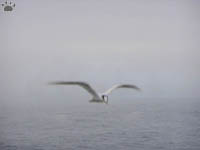
Arctic tern (S. paradisaea), off South Georgia. |
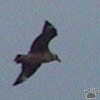
Brown skua
(Stercorarius antarctica),
Stanley, Falkland Is. |

Brown skua chasing a sooty shearwater (Puffinus griseus).
The skua tried to rob the shearwater of a fish
it had caught, but the shearwater kept diving every time the skua was about to
kick it. After two or three
minutes, the skua gave up the chase. Beagle Channel, Tierra del Fuego. |
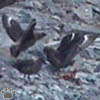
South Polar skuas
(S. maccormicki), Hope
Bay, Antarctic Pen. |
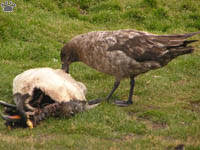
Brown skua feeding on a dead king penguin,
Grytviken, South Georgia. |
Skuas are the bad boys of the Scotia Sea islands.
They feed on carrion, garbage, fish, eggs and chicks of other birds, and also
rob fishing seabirds of their catch. Of the three local species, brown skua (with
two subspecies, northern and southern) is the most common, widespread, and predatory.
Three smaller species come from the Arctic to winter, but are seldom seen. |

Chilean skua (S. chilensis) and
imperial shags,
Beagle Channel, Tierra del Fuego. |
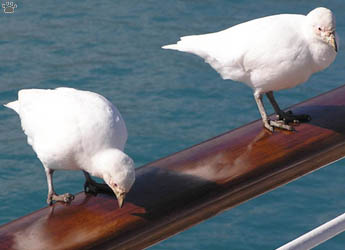 |
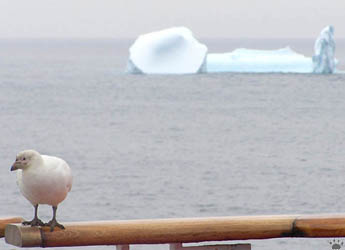 |
| Snowy sheathbills (Chionis alba),
Grytviken, South Georgia. |
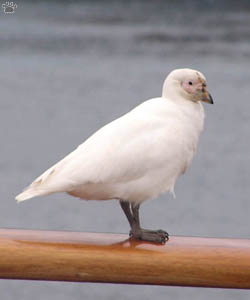
Snowy sheathbill, Grytviken. |
Sheathbills' diet is similar to that of skuas.
Their flight is a bit clumsy, but they are mostly migratory, breeding from South
Georgia south and wintering in South America and the Falklands. They are related
to plovers and, unlike other seabirds, don't have webbed feet. This species only
breeds in Scotia Sea area, with total population estimated at 10,000 pairs. Most
of them hang out around penguin colonies in summer, and garbage dumps in winter.
They are very tame. |
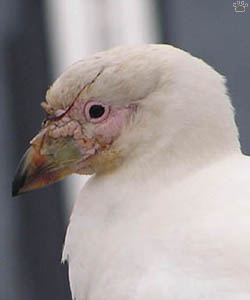
Snowy sheathbill, Drygalski Fjord, South Georgia. |

Imperial shags (Phalacrocorax atriceps), Beagle Channel,
Tierra del Fuego. |
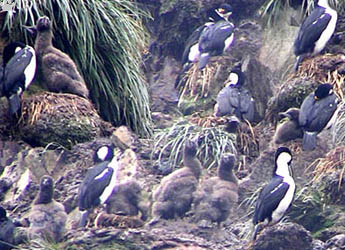
South Georgian shags (Ph. georgianus),
Elsehul, South Georgia. |
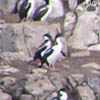
Antarctic shags (Ph.
bransfieldensis), Hope
Bay, Antarctic Pen. |
Blue-eyed shags inhabit rocky cliffs on all island
groups around the Scotia Sea. Recent DNA research suggested that three very similar
races are, in fact, separate species: imperial shag in South America and the Falklands,
South Georgian Shag on South Georgia, South Orkney and South Sandwich Islands,
and Antarctic shag on South Shetlands and the Peninsula. Three more species of
cormorants occur on Tierra del Fuego. All are mostly sedentary, and hunt for fish
not far from shore, sometimes in large flocks. |
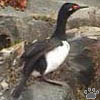
Rock shag (Ph.
magellanicus), San
Julian, Patagonia. |
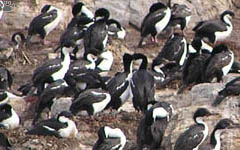
Imperial shags, Beagle Channel, Tierra del Fuego. |
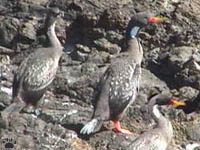
Grey cormorants (Ph. gaimardi), San Julian. |
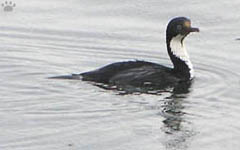
Imperial shag, Ushuaia, Tierra del Fuego. |
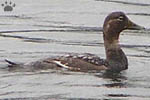
Flying steamerduck, Ushuaia,
Tierra del Fuego. |
Steamerducks are so called because their often
run across water surface, flapping their wings as an old steamer boat with sidewheels.
The widespread flying species (Tachyeres patachonicus) is apparently the
ancestor of flightless Magellanic steamerduck (T. pteneres) on Tierra del
Fuego, and Falkland steamerduck (T. brachypterus) on the Falklands. |
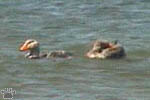
Falkland steamerduck, Gypsy
Cove, Falkland Islands. |
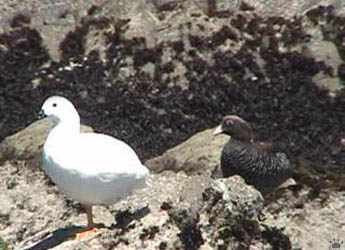
Kelp geese (Chloephaga hybrida), Beagle Channel, Tierra
del Fuego. |
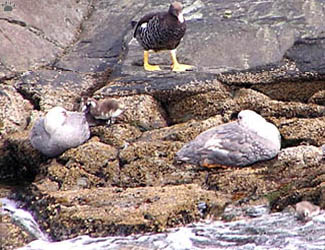
Kelp goose and Magellanic steamerducks with chicks, Beagle Channel. |
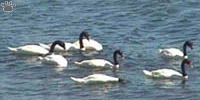
Black-necked swans (Cygnus melanocorypha),
Gypsy Cove, Falkland Islands. |
On rocky shores of Tierra del Fuego and the Falklands,
steamerducks are often joined by kelp geese, beautiful birds with striking sexual
dimorphism. Numerous other coastal waterbirds that occur there range in size from
tiny grebes to black-necked swans. |
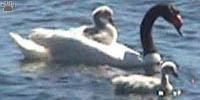
Black-necked swan with chicks,
Gypsy Cove, Falkland Islands. |
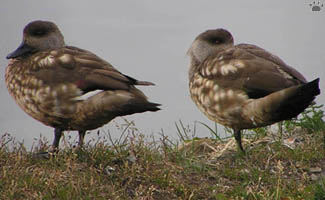 |
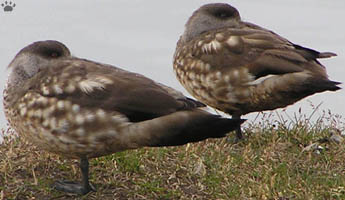 |
| Crested ducks (Anas specularioides),
Tierra del Fuego National Park. |
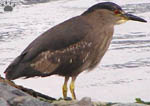
Black-crowned night heron
(Nycticorax nycticorax), Gypsy Cove. |
This coastal bird community also includes night-herons,
plovers, oystercatchers, snipes, kingfishers, birds of prey, four species of small
birds called cinclodes, and numerous wintering waders from the Northern hemisphere.
Of all those, only two species of ducks have made it to South Georgia. The islands
further south have only seabirds. Let's start the tour of Scotia Sea islands from
where all diversity is. |
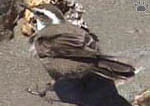
Dark-bellied cinclodes (Cinclodes
patagonicus), Ushuaia. |

Royal albatross (D. epomophora), Scotia Sea. |
Part 5: Temperate Islands
Back to Part 3
Home
|